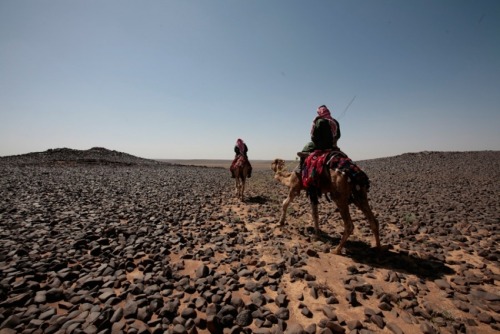Nabil Boutris on his experience photographing Bedouin in Egypt: The desert can be fascinating;
Nabil Boutris on his experience photographing Bedouin in Egypt:The desert can be fascinating; it could evoke infinity while its nakedness can be brutally forbidding. I always felt that photographing the desert was a useless exercise, but being there and becoming aware of my own vulnerability is almost a spiritual, and necessary experience. To attempt to understand how man can slip into that environment, adapt and then immerse into it to survive is also part of such an experience. In an earlier project, I have approached the monks in the Egyptian desert; to undertake a new approach with the Bedouins in the Jordanian desert seemed to bring me closer to my aspirations.There was also another reason for me to go there. Being influenced by the Muslim Egyptian sedentary culture, I knew that I could find some keys of Islam through the Bedouins culture in that region. These keys were abstract as long as I was bathed into the Nile’s rural culture. My first contacts led me quickly to the question: “ What is it like to be a Bedouin today in Jordan?”The Bedouins have a very close relationship with water and their land. It is an entire society built on nomads’ values, looking for water and food for their animals as well as for themselves. Since almost two decades, drought and economic constraints have seriously endangered the regular rhythm of pastoral migrations. The rains are getting scarcer, the pastures are not being regenerated and the price of their produce (meat, milk, wool) is too low to allow for a viable pastoral activity. Only the lucky owners of large herds can still earn their living from such activity, while the others have to sell their cattle and are forced into a life of poverty in a rural or urban region. Furthermore, the effect of climate changes is made worse by the regional disputes over water, by the bad usage of the available water and by some political decisions (such as channeling wells’ water to the cities). All these factors put together contribute to a more deserted steppe, less capable of providing life shelters, thus resulting in a sterile land and desolate landscape.The work presented here was undertaken over a period of more than a year (2007-2008) covering the Jordanian territory; it is meant to illustrate the relationship the Bedouins have with their natural environment, as well as with modernity and settlements as it is being enforced by authorities. -- source link
Tumblr Blog : 5centsapound.tumblr.com
#nabil boutris#bedouin









